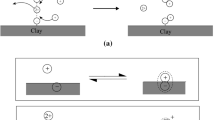Abstract
Numerical simulations show that water and oil/oily-contaminant migration are controlled by regional fluid-potential fields which may be modified locally by highly permeable lenses and buoyancy. In addition, fluid potentials are coupled to the distribution of oil/oily-contaminant via relative permeability and capillary-pressure curves. As saturation distributions evolve through space and time, so do the water and oil fluid-potential surfaces.
The importance of capillary forces in oil contaminant migration and entrapment is illustrated by the fact that, in certain cases, lenses fill from above, even when the migrating fluid is lighter than water. Capillary forces operating in conjunction with lenticular reservoirs create excellent dynamic oil traps by allowing free passage of water, while retaining and concentrating oil.
The analysis of oil (oily-contaminant) migration using numerical modeling and potentiometric-surface techniques is useful for the prediction of migration pathways and potential accumulation sites. On the other hand, identifying acatual accumulations from fluid-potential measurements (via inverse modeling) is not possible because fluid potentials are not uniquely dependent on saturation.
Resumé
L'importance des forces capillaires dans la migration et le piégeage des hydrocarbures est illustrée par le fait que dans certains cas les lentilles sont remplies par le haut, même si le fluide polluant est plus léger que l'eau. Les forces capillaires, en association avec des réservoirs lenticulaires constituent d'excellents pièges dynamique à hydrocarbures en permettant le libre passage de l'eau et en fixant et en concentrant les hydrocarbures.
L'analyse de la migration des hydrocarbures à partir de la modélisation numérique et des techniques des surfaces potentiométriques est très utile pour prédire les trajets de migration et les sites d'accumulation potentielle. Par ailleurs, l'identification des accumulations actuelles à partir de mesures de potentiel de fluide n'est pas possible parce que ces potentiels ne dépendent pas uniquement de la saturation.
Similar content being viewed by others
Author information
Authors and Affiliations
Rights and permissions
About this article
Cite this article
Rostron, B., Tóth, J. Numerical Simulation Of Oil/Oily-Contaminant Migration And Entrapment In A Lenticular Reservoir. HYJO 1, 15–33 (1992). https://doi.org/10.1007/PL00010964
Published:
Issue Date:
DOI: https://doi.org/10.1007/PL00010964




